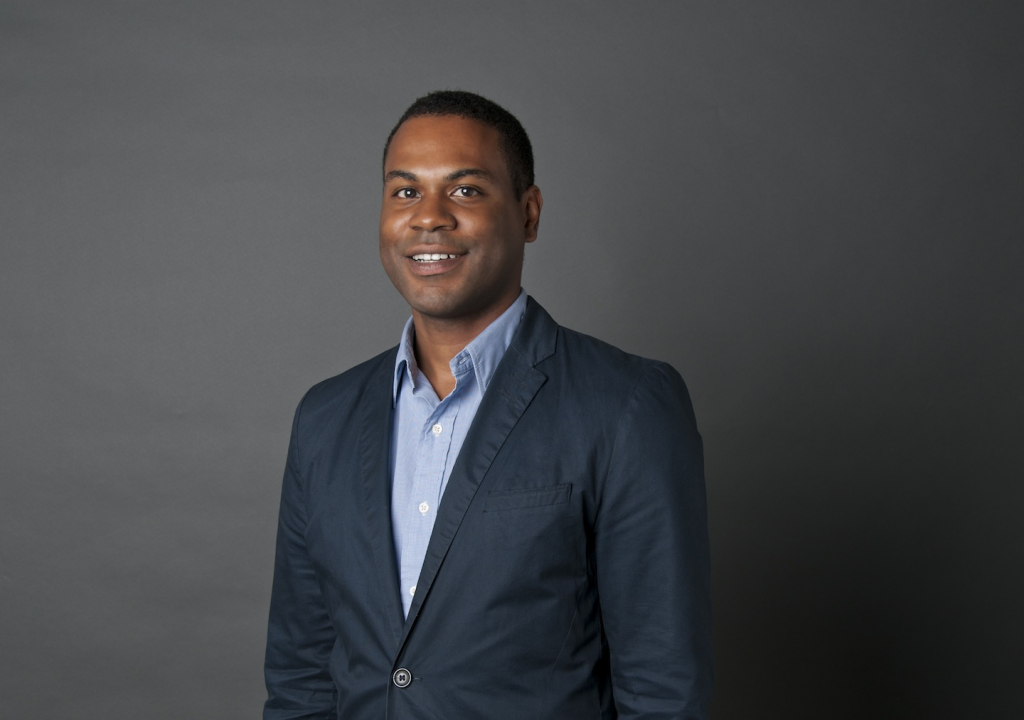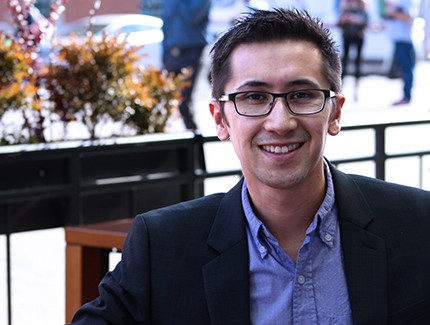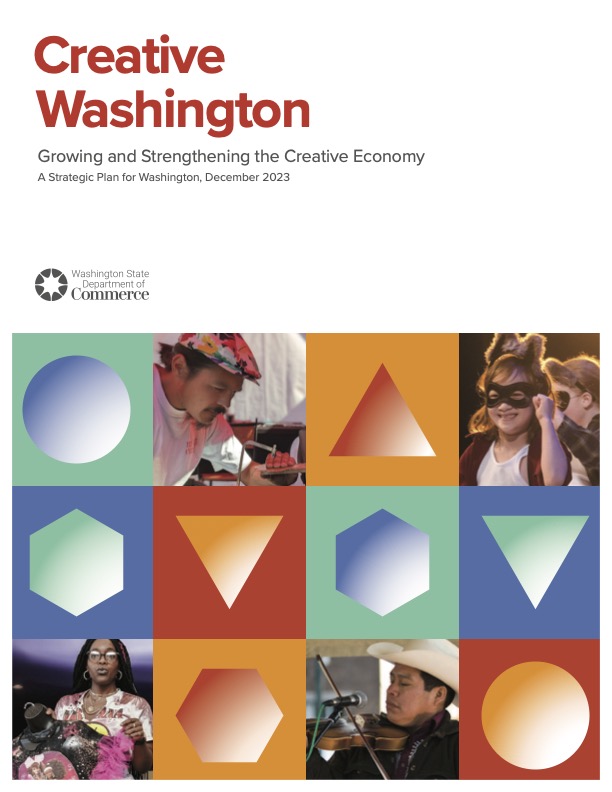Washington state is known for its stunning landscapes, including the majestic Mount Rainier, their beloved Starbucks coffee, high-tech companies like Microsoft and Amazon, and the arts.
In fact, Washington state’s creative economy is experiencing a surge, contributing nearly $120 billion to the state’s GDP. While innovative technology spearheads much of the economic activity, industries such as culinary, fashion, film, and music (to name a few) also play significant roles in bolstering the economic growth and vitality of the state.
In 2022, driven by legislative leadership in SB 5238 (2021–2022), the Washington State Department of Commerce embarked on a strategy to focus on the creative economy. A diverse team, including representatives from the Western States Arts Federation (WESTAF) (the parent organization of CVSuite), Cultural Planning Group, and Third Way Creative, was selected to lead the creation of a strategic plan for Washington in collaboration with a workgroup of creative stakeholders from across the state.
The group aimed to develop a plan with strategies and recommendations for ways to generate new creative jobs and enhance the success of small businesses, while also providing a means to demonstrate the impact of the creative economy in the state. WESTAF’s creative economy data tool, CVSuite, proved to be one of the key data solutions for analyzing Washington’s creative economy. CVSuite data was used to create a working definition of Washington’s creative economy, analyze the current creative landscape, and guide the strategic framework and key consultation findings.
We had the privilege of interviewing several key individuals involved in this process. Among them were WESTAF’s own Deputy Director David Holland and Director of Technology Paul Nguyen, as well as Cultural Planning Group’s Ph.D. Partner Linda Flynn. These interviews provided us with valuable insights into how CVSuite played a crucial role in shaping the strategic plan, and in turn, the future strategies Washington state may employ to advance their creative sector. Read on to learn more.
What motivated the team to pursue this strategic plan project?
➤ David Holland: WESTAF was invited to consider this opportunity by our partners in the state of Washington, who felt that our track record in conducting creative economy studies nationally and our Creative Vitality Suite software platform would give us a distinct advantage in approaching an innovative project of this scale and complexity.
➤ Linda Flynn: It was a unique opportunity to do a statewide Creative Economy plan with WESTAF as the partner.
How was CVSuite data utilized to shape and advance the strategic plan? In what way(s) was CVSuite data most impactful to the development of the plan?

➤ David Holland: CVSuite data was used to understand the scope, scale, composition and dynamics of Washington’s creative economy as a whole and the distinct assets of each of its regions. The top-line statistics and data presented in the final plan are derived from CVSuite data.
➤ Paul Nguyen: Understanding the creative economy landscape across the state of Washington helped identify the strengths and uniqueness of each area. Data around jobs, earnings, the growing and declining industries, and demographics
gave the team discussion points to validate and inquire during the working group sessions.
➤ Linda Flynn: The CVSuite was definitely one of the focuses of the plan development and helped us define the CE for all regions within the State of Washington. It was valuable to understand the distinct differences between the regions.
Did the methodologies used in CVSuite’s definition of creative economy influence the way you approached the development of a creative economy definition for this plan? If not, how and why did they differ from your approach?
➤ David Holland: CVSuite’s definition of the creative economy was instrumental in helping stakeholders better define Washington state’s unique creative economy. We started with the CVSuite standard definition and adjusted based on factors that individuals within the state’s creative economy thought were important.
➤ Paul Nguyen: We started with a combination of Washington’s Office of Economic Development and Competitiveness definition (which is based on the Washington Arts Commission’s use of CVSuite) and CVSuite’s standard definition of the creative economy. There was quite a bit of overlap in the beginning. After the first report, we identified a lack of representation from the fashion sector. We looked at inspiration from the Denver Arts and Venues and California’s Otis report. The final creative economy definition landed on nine creative sectors:
- Music, Theater, Dance, and Visual Arts
- Design and Advertising
- Architecture and Living Spaces
- Creative Technology
- Film, Television, and Radio
- Publishing
- Fashion
- Culinary Arts and Beverage
- Cultural and Heritage
➤ Linda Flynn: Yes, [using CVSuite’s definition of the creative economy] we developed a comprehensive definition for the whole state. See the example here.
You used CVSuite data in addition to data from other sources. What were those sources and how did they complement one another?

➤ Paul Nguyen: We used a combination of CVSuite data, additional data from Lightcast (CVSuite’s data partner), and input/output data from IMPLAN. I think we were successful in drawing the line between the IMPLAN and Lightcast data. IMPLAN focused on ecosystem analysis, such as gross domestic product, household demand, and exports. CVSuites data focused on descriptive and growth information such as jobs,
earnings, location quotient, and shiftshare.
There was a place for both.
➤ David Holland: In addition, the team used an extensive consultation process with over 440 stakeholders through interviews, focus groups, and a statewide survey to gather qualitative data to inform the recommendations presented in the plan. The team also reviewed creative economy policymaking in Washington, other states, and internationally (looking at legislation, rules, agency policies, etc.) to map gaps and opportunities for the state to retool its approach to policymaking.
What insights or recommendations do you have for other organizations considering integrating CVSuite into their strategic planning processes?
➤ David Holland: CVSuite was designed to provide a customizable data source for different communities to define their creative economies on their own terms. It was also designed to allow for comparability of regional creative economies. Both of these features were really showcased in the Washington creative economy strategic plan process. Stakeholders were able to work with the team to develop an appropriate statewide definition of the creative economy and to better distinguish the unique creative economies of each of the state’s regions.
➤ Paul Nguyen: Combining quantitative and qualitative data made the project successful. When you can validate quantitative data with real stories from the communities, it humanizes the information and brings to light other information that you can’t see in the data.
➤ Linda Flynn: The CVSuite was critical in helping us define the CE for the whole state. We complemented it with qualitative research and a statewide survey. Understanding the profile of the state informed the other research and the strategies for the plan.

Is there anything else you would like to share about working with CVSuite data?
➤ Paul Nguyen: With any initiative, policy, or analysis, think about what success means to your communities. How will you measure success? What metrics will lead to the impacts and outcomes you hope to achieve? By answering this one question, you can start working backward to identify ways to make change.
We would like to thank the Washington Department of Commerce, Cultural Planning Group, Third Way Creative, and the many talented stakeholders who took part in this strategic plan. We look forward to how this plan will uplift, inspire, and pave the way for other regions as well as open many doors of opportunity for creatives across Washington.
Learn More About Our Interviewees

David Holland, Deputy Director, WESTAF
David Holland joined WESTAF in 2019 as director of public policy to lead its advocacy and public policy programs and services and serve as the primary liaison with federal agencies, regional arts organizations, state and local arts agencies, and state arts advocacy groups. His role evolved to drive the impact of WESTAF’s leadership and professional development programming, grantmaking, and technical assistance and consulting services across teams as deputy director. Since joining WESTAF, he has also launched the Creative Vitality™ Summit; authored the Creative Economies and Economic Recovery report in partnership with NASAA; chaired the redesign of the National Endowment for the Arts’ Performing Arts Discovery program; established the Western Arts Advocacy Network; collaborated on developing new equity-focused relief and resilience grantmaking programs in the West and the Commonwealth of the Northern Mariana Islands; spearheaded WESTAF’s Arts and the Rural West gathering; reimagined its Arts Leadership and Advocacy Seminar; joined the faculty of the Emerging Leaders of Color program; and secured private and public investment for WESTAF’s programs. Holland previously served as associate director of the Arts and Business Council of Greater Boston. He is a Salzburg Global Fellow, Evan Carroll Commager Fellow, and a fellow of the Royal Society of Arts. Holland holds a bachelor’s degree in economics and Asian studies from Amherst College and masters degrees in international studies and diplomacy and the history of art from the University of London, SOAS.

Paul Nguyen, Director of Technology, WESTAF
Paul Nguyen leads the technology strategy for WESTAF’s web services, business intelligence, security, compliance and implementation, digital marketing tools, data architecture, and more. He has a successful history of guiding WESTAF’s Software as a Service (SaaS) products, having served in various tech roles from 2007-2019 and, more recently, serving on WESTAF’s board of trustees. Before returning to WESTAF in his current role, Nguyen was a product manager at JumpCloud, where he developed internal and external data strategy and brought to market several innovative B2B data products and API for IT professionals and security-forward companies. He leverages his experience and insight in data and technology to advance WESTAF’s initiatives in arts, policy, and social equity. Nguyen holds a bachelor’s degree in illustration from Parsons School of Design and a master’s degree in data science from Regis University. Outside of work, he enjoys spending time with his family, gardening, and exploring Colorado.

Linda Flynn, Ph.D., Partner, Cultural Planning Group
Linda Flynn is a planner, a researcher, and a civic engagement expert. She is a believer in how public art, the cultural arts, and creativity can change a community. Her expertise and knowledge is not only built through formal education but also through experience in every community we work. Her undergraduate degree is in psychology, and she holds a Ph.D. in organizational development with a concentration in conflict resolution. Linda began her career conducting research for marketing and advertising, progressed to transportation behavioral research helping government understand how people respond to new technologies, and followed her heart to the arts! She has training specifically related to qualitative and quantitative research and community engagement. “My best strength is flexibility – in mind, in job, and body! (Yes, I am a yoga girl.) Being flexible and able to adapt to many different situations at different times builds resiliency and focus.”



Comments are closed.